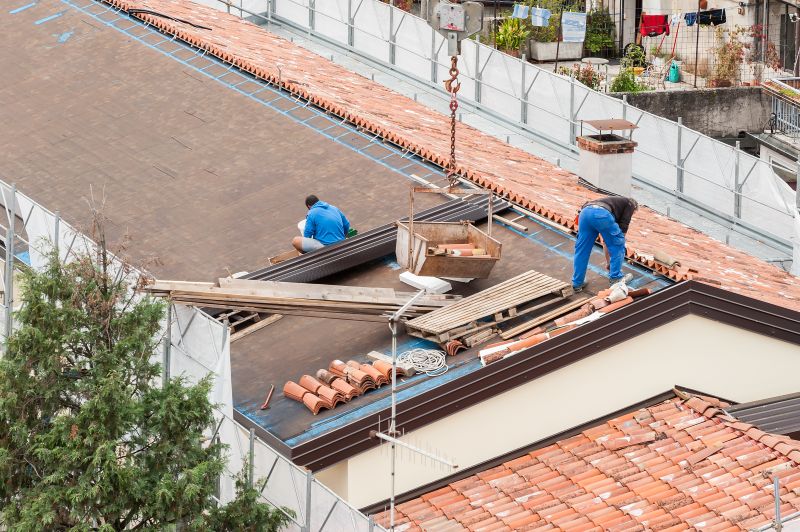When you think about replacing a roof or erecting a new build, what comes to mind first? Probably trusses, shingles, flashing, and tar paper. But before any of that gets nailed down, there’s one major phase that too often gets overlooked in planning conversations: lifting and placing the structural elements—especially beams.
Roofing isn’t just about what goes on top—it’s about how it gets there. And for many of us in the construction trade, lifting chains are the silent heroes that make these operations safer, faster, and more precise.
Let’s break down the process of replacing a roof and explore how lifting chains factor into the mix—because understanding this connection could mean tighter timelines, safer crews, and cleaner installs.
When Roof Replacement Isn’t Just About the Roof
Sometimes a roof replacement is as straightforward as removing the old surface materials and replacing them in kind. But in many cases—especially with aging homes or storm-damaged properties—the project starts with structural concerns. Rafters or ridge beams may be compromised, walls may be bowed out of square, or entire sections might need demolition and re-framing.
Whether you’re working on a rural farmhouse or an inner-city townhouse, the logistics of lifting materials into place often fall into the gray area between the framer and the crane operator. It’s here that rigging—and specifically, lifting chains—play a crucial role.
Why Lifting Chains Matter in Roof Projects
Chains aren’t just for heavy industry. When it comes to residential and light commercial roofing work, lifting chains (especially Grade 100 chain slings) are increasingly common for beam placement and structural hoisting.
Here’s why contractors are reaching for chain over traditional synthetic or wire rope slings:
Precision Placement of Beams
Steel chains offer minimal stretch and high tensile strength, which translates to better control when placing ridge beams, LVLs, or prefabricated truss sections. On tight job sites—especially ones surrounded by existing structures—being able to accurately guide loads into position matters.
Superior Heat and Abrasion Resistance
Compared to nylon slings, lifting chains can handle exposure to sharp edges, rough materials, or sparks from nearby cutting tools or welding equipment without degradation. That’s especially helpful on job sites where framing and metal work happen simultaneously.
Modularity and Adjustability
Adjustable chain slings allow you to change leg lengths on the fly—ideal for irregular loads like reclaimed beams or custom-fab steel trusses. That flexibility can save hours of re-rigging on a complex roof install.
Typical Use Cases: Roof Replacement & Structural Upgrades
Here are a few real-world scenarios where lifting chains prove invaluable on roofing projects:
- Replacing Load-Bearing Ridge Beams
When an old ridge beam needs removal and a new one installed, contractors often rig from above using a mobile crane. Lifting chains allow you to lift, swing, and lower the new beam into place with minimal sway—crucial when working between existing walls. - Installing Truss Packs on New Builds
For new constructions, truss systems often arrive pre-assembled in packs. Chains with spreader bars help keep these packs balanced and secure during hoisting—reducing the risk of twisting or mid-air collapse. - Lifting Roof Decking Panels
On some projects, particularly commercial flat roofs, entire panels of plywood or sheathing are hoisted together. Chain slings offer the strength and stability to handle these palletized loads confidently. - Supporting Loads During Structural Repairs
When temporarily removing parts of the structure during retrofits, chains can be used with gantries or hoists to suspend framing components while new supports are inserted underneath.
Lifting Chain Safety: What Contractors Should Know
Contractors using chains for the first time need to keep a few key safety principles in mind:
- Inspection is non-negotiable
Chain slings must be inspected before every lift. Look for signs of wear, stretching, cracking, or damage to hooks and connecting hardware. - Know your ratings
Each leg of a chain sling contributes to the load capacity, but only if the angle and configuration are within safe limits. Use angle charts and always calculate based on the weakest link. - Don’t improvise
Avoid using homemade or mismatched components. Buy slings that are rated, tagged, and certified for lifting applications. - Train your crew
Your rigging is only as safe as the person attaching it. Take the time to train even seasoned carpenters on the basics of load path, center of gravity, and proper hook placement.
Choosing the Right Chain Sling
Not all chains are created equal. For overhead lifting, Grade 100 or higher alloy steel is required. Depending on the load shape and weight, you may opt for:
- Single-leg slings – ideal for lifting narrow items like beams
- Two- or four-leg slings – better for square loads or lifting with balance
- Adjustable slings – offer flexibility for odd-shaped or uneven loads
- Components like shortening clutches and grab hooks – useful for fine-tuning the length of each chain leg
There are a variety of configurations and components available for different load types and rigging setups. A good resource for browsing different lifting chains is https://sling-smarter.com/, which catalogs multiple configurations and allows you to build custom slings suited to your job.
Don’t Overlook the Lift
We get it—rigging is often an afterthought in the roofing world. But the best contractors plan their lifts just as carefully as they plan their cuts.
A well-chosen chain sling can save you time on beam placement, reduce the risk of dropped loads, and help your team get the structure sealed in faster—especially when weather is closing in.
Whether you’re lifting a single LVL or an entire roof truss system, the right chains can make the difference between an awkward, time-consuming install… and a clean, professional job.

